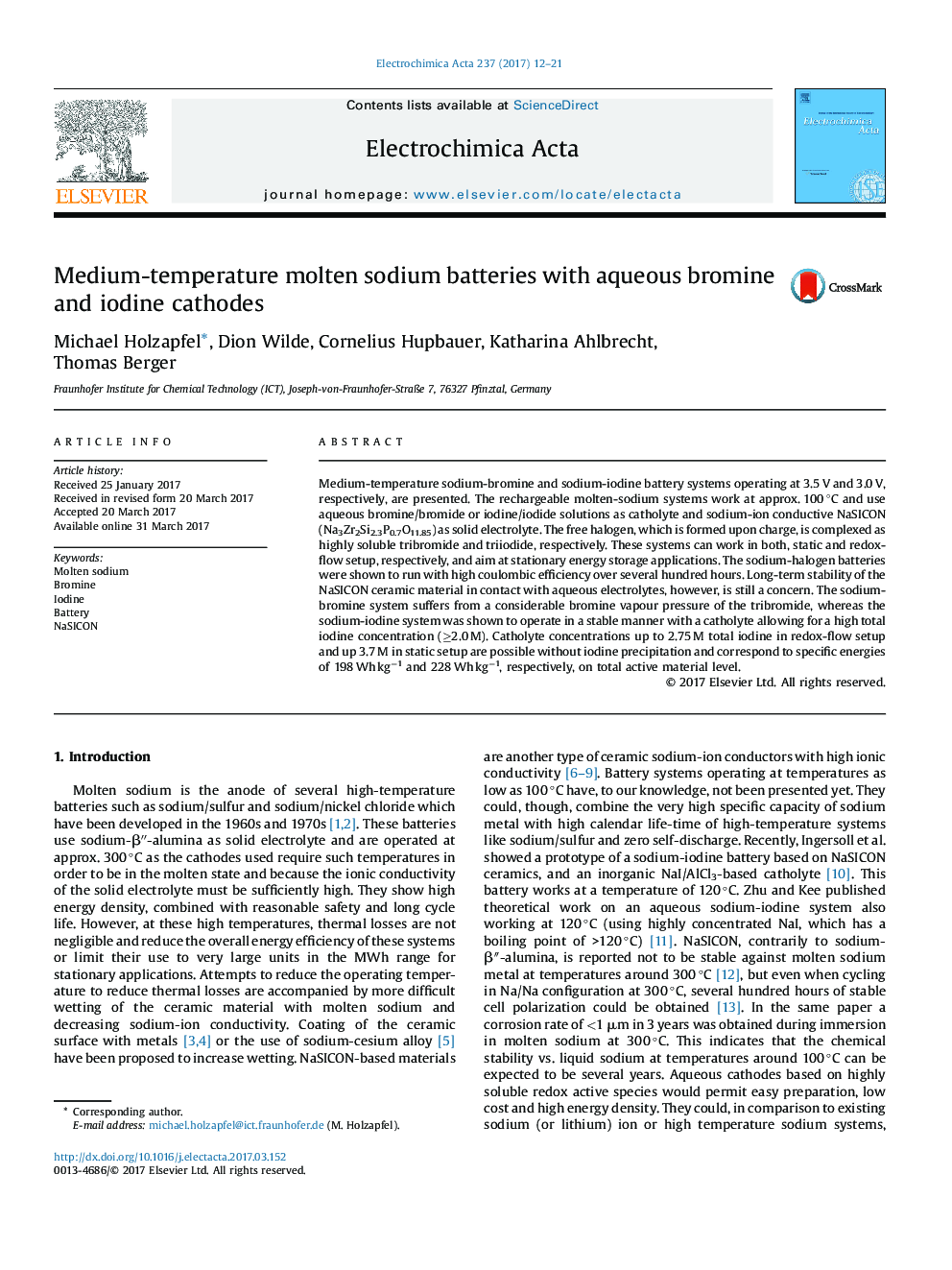| Article ID | Journal | Published Year | Pages | File Type |
|---|---|---|---|---|
| 4767122 | Electrochimica Acta | 2017 | 10 Pages |
Abstract
Medium-temperature sodium-bromine and sodium-iodine battery systems operating at 3.5 V and 3.0 V, respectively, are presented. The rechargeable molten-sodium systems work at approx. 100 °C and use aqueous bromine/bromide or iodine/iodide solutions as catholyte and sodium-ion conductive NaSICON (Na3Zr2Si2.3P0.7O11.85) as solid electrolyte. The free halogen, which is formed upon charge, is complexed as highly soluble tribromide and triiodide, respectively. These systems can work in both, static and redox-flow setup, respectively, and aim at stationary energy storage applications. The sodium-halogen batteries were shown to run with high coulombic efficiency over several hundred hours. Long-term stability of the NaSICON ceramic material in contact with aqueous electrolytes, however, is still a concern. The sodium-bromine system suffers from a considerable bromine vapour pressure of the tribromide, whereas the sodium-iodine system was shown to operate in a stable manner with a catholyte allowing for a high total iodine concentration (â¥2.0 M). Catholyte concentrations up to 2.75 M total iodine in redox-flow setup and up 3.7 M in static setup are possible without iodine precipitation and correspond to specific energies of 198 Wh kgâ1 and 228 Wh kgâ1, respectively, on total active material level.
Related Topics
Physical Sciences and Engineering
Chemical Engineering
Chemical Engineering (General)
Authors
Michael Holzapfel, Dion Wilde, Cornelius Hupbauer, Katharina Ahlbrecht, Thomas Berger,
